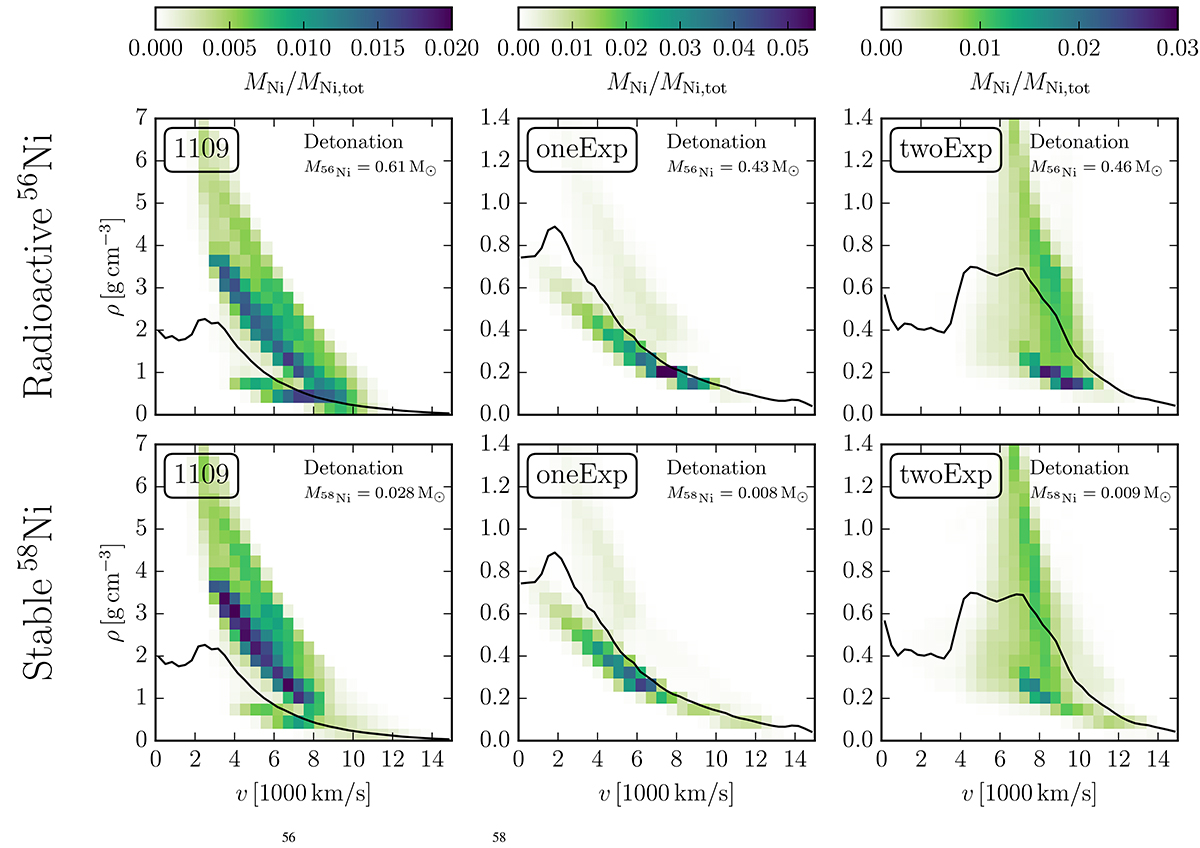Fig. 2.

Download original image
Distribution of radioactive 56Ni (top row) and stable 58Ni (bottom row) in density–velocity space 100 s after the explosion. Each histogram is normalised individually to the total mass of the type of nickel it shows. The columns show different sub-Chandrasekhar-mass merger explosion models: a violent merger (1109; Pakmor et al. 2012a) and a helium ignited merger in which only the primary white dwarf (oneExp; Pakmor et al. 2022) explodes or both white dwarfs explode (twoExp; Pakmor et al. 2022). The solid line shows the spherically averaged density profile of the total mass of the ejecta. The distributions of radioactive and stable nickel in the ejecta are highly correlated. Only the oneExp model is close to spherical symmetry. In both the 1109 and twoExp models the secondary white dwarf explodes as well, compressing the ejecta of the primary white dwarf that contain primarily nickel. In the 1109 model the secondary explosion compresses the nickel to much higher densities than in the twoExp models because it happens with a delay of only 1 s compared to 4 s in the twoExp model.
Current usage metrics show cumulative count of Article Views (full-text article views including HTML views, PDF and ePub downloads, according to the available data) and Abstracts Views on Vision4Press platform.
Data correspond to usage on the plateform after 2015. The current usage metrics is available 48-96 hours after online publication and is updated daily on week days.
Initial download of the metrics may take a while.


